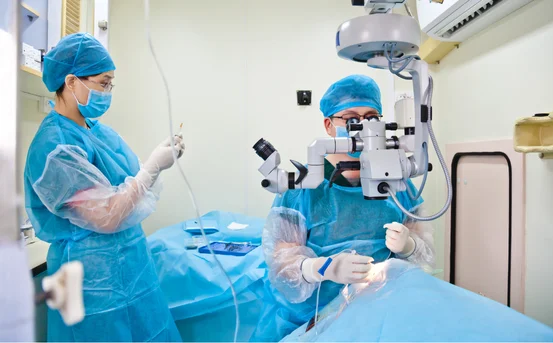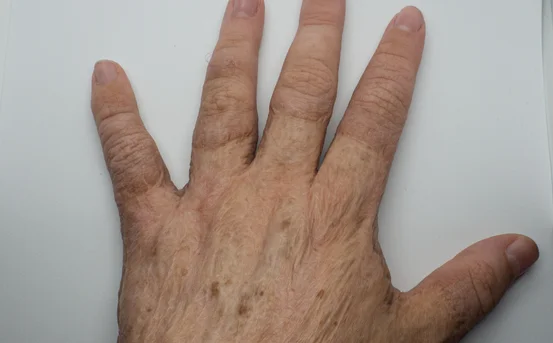Introduction
Appendectomy is a surgical procedure used to remove the appendix, a small, tube-shaped organ attached to the large intestine in the lower right side of the abdomen. While the appendix doesn’t have a known essential function in modern humans, it can become inflamed or infected, resulting in a condition called appendicitis. This condition often presents as a medical emergency and, if left untreated, can lead to severe complications including rupture, abscess formation, and life-threatening infections like sepsis.
Here you will get the insights on appendectomy surgery procedure. The treatment for appendicitis follows a structured and timely approach from the early identification of symptoms to surgical removal and post-surgical recovery. Understanding each stage of the appendectomy surgery procedure is essential for patients and caregivers to ensure a smooth treatment journey and prompt medical response.
Appendectomy Surgery Procedure
- Identifying the Symptoms of Appendicitis :- The first stage in the treatment process is recognizing the symptoms that may indicate appendicitis. These often include a sudden onset of pain in the lower right abdomen, pain that may initially start around the navel and shift downward, a noticeable loss of appetite, and feelings of nausea or vomiting. Some individuals may also experience fever, abdominal bloating, and changes in bowel habits such as constipation or diarrhea. In children and pregnant women, symptoms might not follow the typical pattern, making early medical evaluation even more crucial. Seeking immediate medical attention upon noticing these signs can prevent serious complications like rupture. Familiarizing oneself with the appendectomy surgery procedure can alleviate patient anxiety and improve cooperation during treatment.
- Medical Evaluation and Diagnosis :- After presenting symptoms, the patient undergoes a thorough medical assessment to confirm the diagnosis. A physical examination helps the doctor evaluate tenderness, especially at McBurney’s point, along with signs of rebound pain or abdominal rigidity. Blood tests are often ordered to check for elevated white blood cell counts, a typical sign of infection. Imaging tests such as ultrasound or CT scan provide a clear view of the appendix. In some cases, MRI is used, especially in pregnant women, to avoid radiation. Prompt diagnosis is vital because a delayed decision increases the risk of the appendix rupturing and spreading infection throughout the abdomen.
- Hospital Admission and Preoperative Preparation :- Once appendicitis is confirmed, the patient is admitted to the hospital for surgery. Before the procedure, the medical team explains the surgical approach, potential risks, and expected outcomes. The patient or guardian signs a consent form. Fasting is required for several hours before surgery to minimize anesthesia-related complications. Intravenous fluids are administered to maintain hydration, and antibiotics are started to help reduce the risk of infection. If the appendix has already burst, more intensive antibiotic therapy might be necessary before and after the operation.
- The Appendectomy Surgery :- Appendectomy is carried out under general anesthesia, ensuring that the patient is completely unconscious and pain-free throughout the operation. The procedure can be performed using either an open or laparoscopic technique. In an open appendectomy, the surgeon makes a single incision in the lower right abdomen to access and remove the appendix. If the appendix has ruptured, the surgeon also cleans the surrounding abdominal area to remove infectious material. In a laparoscopic appendectomy, several small incisions are made, through which a camera and surgical instruments are inserted. The appendix is removed with minimal trauma to surrounding tissues. This method is generally preferred when possible, as it results in less pain, reduced scarring, and a quicker recovery. However, in complicated or advanced cases, open surgery may be more suitable. Typically, the entire procedure lasts between 30 to 90 minutes. The appendectomy surgery procedure is generally well-tolerated by patients and is associated with a high success rate.
- Postoperative Care in the Hospital :- Following surgery, the patient is moved to a recovery room where vital signs are closely monitored. As the effects of anesthesia wear off, pain management begins. Most patients experience only mild to moderate discomfort, which is managed with standard pain medications. A clear liquid diet is introduced, and if well tolerated, patients gradually resume solid food. Early mobilization is encouraged — many patients are asked to sit up or walk on the same day of the surgery. This helps improve circulation, reduce the risk of blood clots, and promote faster healing. The duration of the hospital stay depends on the type of surgery performed and whether any complications occurred. Patients who undergo laparoscopic surgery may be discharged within 24 to 48 hours, while those who had open surgery or experienced a rupture might need to stay in the hospital for several days. Patients are usually informed about what to expect during the appendectomy surgery procedure to reduce anxiety.
- Postoperative Home Care and Recovery :- After discharge, careful at-home care is essential for full recovery. Patients are advised to keep the incision sites clean and dry and follow specific wound care instructions provided by the healthcare team. Signs of infection such as redness, swelling, or pus around the incision should be monitored and reported immediately. Physical activity should be limited — heavy lifting and strenuous exercises are generally avoided for a few weeks. Walking is encouraged, but bending or twisting movements should be minimized initially. Pain medications and antibiotics, if prescribed, must be taken as directed. A regular diet can usually be resumed within a few days, with an emphasis on hydration and fiber intake to prevent constipation. A follow-up visit is typically scheduled within one to two weeks to assess healing and remove stitches if necessary. Understanding the appendectomy surgery procedure helps patients adhere to care instructions post-surgery.
- Potential Complications and Warning Signs :- While appendectomy is a relatively safe procedure, patients should remain vigilant for signs of postoperative complications. A high fever, persistent or worsening abdominal pain, difficulty urinating or passing stool, or abnormal discharge from the wound may indicate infection or internal issues. Rare complications include wound infections, internal abscesses, hernia at the incision site, or bowel obstruction. Immediate medical attention should be sought if any of these symptoms arise during recovery.
- Long-Term Outlook and Prognosis :- Most patients recover completely after an appendectomy and do not experience long-term consequences. Since the appendix is not essential for bodily functions, its removal does not impact digestion or immunity. Children typically return to normal activity, including school and play, within one to two weeks. Adults may return to work within two to four weeks, depending on the physical demands of their job. Strenuous exercises and sports can usually be resumed after four to six weeks. With adherence to medical advice and timely care, the long-term outlook after appendectomy is excellent. Patients often express confidence in their recovery after learning about the appendectomy surgery procedure.
Conclusion
The appendectomy treatment process is a structured and well-established medical approach that begins with symptom recognition and ends with full recovery. With modern diagnostic tools and minimally invasive surgical techniques, patients today experience fewer complications, shorter hospital stays, and faster returns to normal life. The success of the appendectomy surgery procedure lies not just in the surgery itself but in early diagnosis, timely hospital admission, careful postoperative care, and patient awareness of potential complications.
By understanding each step of the appendectomy surgery procedure, patients and caregivers can feel more informed and confident throughout the treatment journey. Prompt medical attention and appropriate follow-up care remain the cornerstones of a successful recovery from appendicitis, making the appendectomy surgery procedure one of the most reliable emergency surgical procedures available today.























